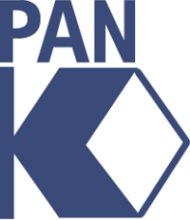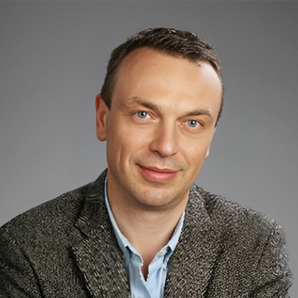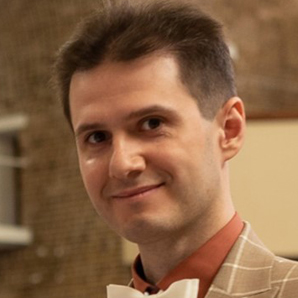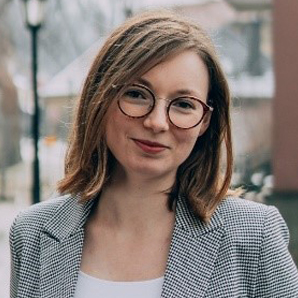
Jerzy Haber Institute of Catalysis and Surface Chemistry PAS
Description
Jerzy Haber Institute of Catalysis and Surface Chemistry PAS has specialized for years in research on the preservation of cultural heritage at the interface of science and the humanities. Research has particularly focused on understanding deterioration processes induced by microclimatic variations and the monitoring of physical changes in the materials of historical objects using non-invasive research methods. The basic research has been linked to extensive programmes in museums and historical buildings, practical conservation work and the development of tools supporting preservation strategies for collections.
Contribution
IKIFP will perform modelling of dynamic deformation of panel and canvas paintings or parchment covered with multi-layer decorative or pictorial layers using key properties of artistic and conservation materials: water vapour sorption isotherms, moisture-related expansion, coefficients of water vapour diffusion in the material and at the surface, stress-strain relationships and fracture toughness. The experimental programme will focus on determining the material properties at high temperatures and humidity levels typical of hot and humid climates. Using the Finite Element method, gradients of moisture content, as well as local deformation and stress in the object structure, will be modelled, and the risk of damage will be assessed for objects of varying shapes, sizes and material composition. The effect of crack networks (craquelures) making the decorative layers significantly less vulnerable to climate variations, will be investigated and taken into account by the inclusion of a sequence of periodic cracks – parallel or rectangular – in the decorative layer.
A key challenge is transferring information on physical damage risk obtained through the modelling to visual changes expected in cultural heritage objects. This is vital for their use for loss-of-value judgements necessary in professional decision-making and in public engagement with cultural heritage. This challenge will be met in two ways. First, IKIFP will link physical change in artworks to appearance change, like distances between cracks, areas of delamination, and degree of cupping or curling of substrates. Users will be able to view the appearance change on generic and real objects studied in the project. Secondly, the modelling of the risk of environmentally-induced damage will be validated by monitoring original objects using innovative approaches to trace climate-induced damage: Acoustic Emission monitoring, which records energy released as sound waves during fracture processes in materials; Digital Speckle Pattern Interferometry (DSPI), mapping cracking and delamination in decorated surfaces with micrometric resolution; 3D Digital Microscopy to scan surfaces with micrometric resolution and ‘stitch’ individual scans to recreate the full image of the cultural object. DSPI will also be used to evaluate consolidation treatments developed in WP5.
The existing web-based HERIe digital platform, developed by IKIFP will be linked to the GoGreen Decision Support App so that the damage functions and models developed within the GoGreen are available to users. The material structure, shape and size of objects will be freely changed by users, including materials used for the stabilization of decorative layers in conservation treatments. Also, changes in material properties over wide ranges of temperature and relative humidity will be taken into account so institutions located in southern Europe or even in tropical climates will be able to use the tools. A new module will be developed, linking the physical damage risk to changes in the appearance of objects.

Łukasz Bratasz
Professor Łukasz Bratasz for many years headed the Laboratory of Analysis and Non-Destructive Testing of Artefacts in the National Museum in Krakow. He was the head of the Sustainable Conservation Lab, at the Institute for the Preservation of Cultural Heritage, Yale University between 2015-2018. Currently, he is head of the Cultural Heritage Research group at the Jerzy Haber Institute.
His research focuses on the response of materials to changes in environmental parameters, risk assessment, physical methods of non-invasive testing and monitoring of museum objects, modelling stresses and strains induced in materials by the impact of environmental factors, the environment in museums and historic buildings, application of physical methods in practical protection of cultural heritage. He took part in or coordinated 35 national and international research projects in the field of cultural heritage.

Marcin Strojecki
Marcin Strojecki graduated in physics from the Jagiellonian University in Krakow, Poland in 2003, and received a PhD in 2009 from the same university. In the same year, he started to work in the Laboratory of Analysis and Non-Destructive Testing of Artefacts in the National Museum in Krakow as a research specialist. In 2010 he joined the staff of the Jerzy Haber Institute, where he is a research fellow. His research focuses on acoustic emission as a non-destructive method of diagnosing damage in historic materials as well as soiling of internal surfaces due to dust deposition.

Sergii Antropov
Sergii Antropov is a research fellow at the Cultural Heritage Research Group (CHRG) at the Jerzy Haber Institute. He defended his PhD in Particle Physics at the Institute of Nuclear Physics in Krakow in 2020 and joined CHRG the next year. His research is focused on the development of the mechanical model for computer simulations of the cracking of the paint layer for a painting on board. He is responsible for the operation of the microscopic scanner and the development of microscopic panoramic images; he is responsible for Digital Speckle Interferometry.
Marcin Bury
Research assistant at the Cultural Heritage Research Group at the Jerzy Haber Institute. He graduated in physics from the AGH University of Science and Technology, Cracow. His research interests focus on studying the formation and development of cracks in paintings. In the GoGreen project, he is responsible for modelling of canvas painting using the Finite Element Method.

Magdalena Soboń
Magdalena Soboń worked for 3 years in the Cultural Heritage Research group at the Jerzy Haber Institute before applying to the doctoral school of JHI this year. She graduated in Materials Science at the AGH University of Science and Technology, where she had her first encounter with heritage science during her bachelor thesis focused on the properties of historical enamels. Currently, she is working with models of cultural heritage objects, which will be her task in the GoGreen project.

Łukasz Berger
Łukasz Berger is a specialist responsible for the development of the HERIe preventive conservation platform enabling qualitative risk assessment. From 2021, he worked on the implementation of modules for chemical degradation, estimation of fire risk, the impact of pollution, and colour loss under the influence of light.

Sonia Bujok
Sonia Bujok is a postdoctoral researcher at the Cultural Heritage Research Group (CHRG) at the Jerzy Haber Institute. After graduating in Chemical Technology (Polymer Technology) at the Cracow University of Technology, she defended her PhD in Macromolecular Chemistry at Charles University in Prague on greener alternatives to commercially available plastics. Currently, she is investigating the degradation of plastic objects in museum collections as well as the long-term mechanical behaviour of polymer systems. In the GoGreen project, Sonia is responsible for the communication and social media of the CHRG.

Nefeli Avgerou
Nefeli Avgerou graduated in Chemistry from the University of Crete and defended her thesis entitled Restoration of cracks in glazed clay ceramic tiles Azulejos using laser technology at the IESL-Forth Institute in Heraklion, Crete. Then, Nefeli defended her master’s thesis Protection, valorization and conservation of monuments and sites at the Architecture Department of the Technical University of Crete. During this time, she also worked in the MachMob laboratory at the same Faculty as a researcher, analyzing historical building materials and proposing and developing new solutions for the renovation of historical buildings. As part of an internship in the R&D Department of Sika Technology AG, she worked on analyzing mine tailings and incorporating them in building materials as a cement and/or aggregates replacement, which was the topic of her master’s thesis: Mine waste as partial substitutes for raw materials in renovation and modern mortars: the transformation of “waste” into “product”.
Currently, Nefeli is conducting research on glass degradation.
